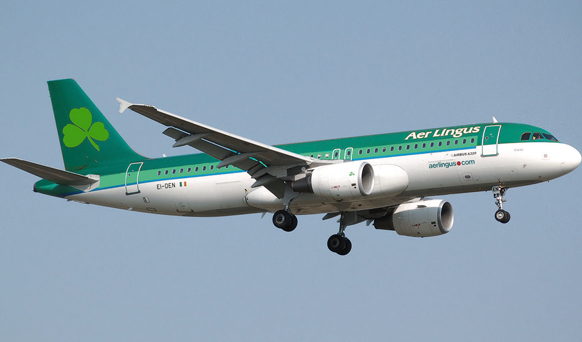International Airlines Group’s (IAG) Irish airline Aer Lingus plans to nearly double its long-haul fleet from 17 to 30 aircraft by summer 2023, using the extra capacity to grow its North American presence.
Addressing delegates at IAG’s capital markets day on Nov. 2, outgoing Aer Lingus CEO Stephen Kavanagh outlined plans for 11% compound annual growth on the North Atlantic by 2023.
Seat capacity will increase from 2.8 million to 4.7 million and frequencies would rise 70%, to hit 196 North Atlantic flights per week.
Roughly 63% of this growth will be in established markets, with the remainder used to add new city pairs—some of which will be unlocked by the addition of its first Airbus A321LRs. By 2023, Aer Lingus expects to serve 18 North Atlantic destinations, compared with 13 today.
This growth will be supported by fleet changes, with the net addition of three widebodies and 10 narrowbodies, compared with today’s long-haul fleet of four Boeing 757s and 13 A330s (five A330-200s and eight -300s).
In 2019, Aer Lingus will receive three Airbus A321LRs, followed by another five in 2020, four in 2021, one in 2022 and one in 2023, for a total fleet of 14 A321LRs. The airline’s four 757s will be phased out in 2020, paving the way for further growth of the A330 fleet, which will expand to 16 aircraft by 2023—two net A330 additions in 2020 and a further one in 2022.
Kavanagh said the A321neo will play a key role in this growth, as the type can operate inbound across the Atlantic to Dublin, and then on to European destinations.
“This growth is CASK-efficient growth,” he said, adding that Aer Lingus will continue to review the opportunities that could be created if Airbus decides to proceed with a longer-range A321XLR.
He said Aer Lingus will also launch new branding and uniforms in the first quarter and “significantly invest in brand spend in North America” to increase revenue and market share.
“We’ve built a compelling competitive position,” Kavanagh said. “We have achieved critical mass. The risk going forward is less than the risk that lies behind us.”
Since being acquired by IAG in 2015, Aer Lingus has grown capacity by 33%, cut unit costs by 18% and doubled the airline’s operating margin to 18%. Kavanagh said Aer Lingus’ return on capital employed has also doubled to 28%.
Over that period, revenue has risen from €1.7 billion ($1.9 billion) to €1.96 billion, and operating profit has grown from €124 million to €317 million.
“We have added close to half a billion in revenue and will exceed a €2 billion top line in 2018. A lot of that increased revenue has been captured as operating profit,” Kavanagh said, building the case for further investment.
Various product upgrades will also be rolled out, including complimentary alcoholic drinks with meals on transatlantic flights, free inflight Wi-Fi for social media use and other digital upgrades, like baggage tracking.
“We will also change our service processes as new aircraft join the fleet and learn from our other operating companies, like Level,” Kavanagh said…



